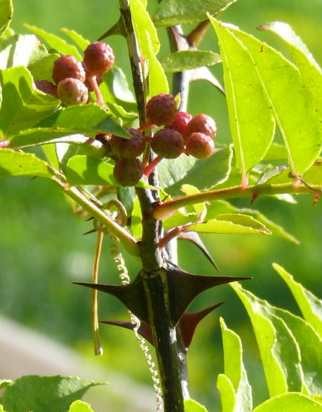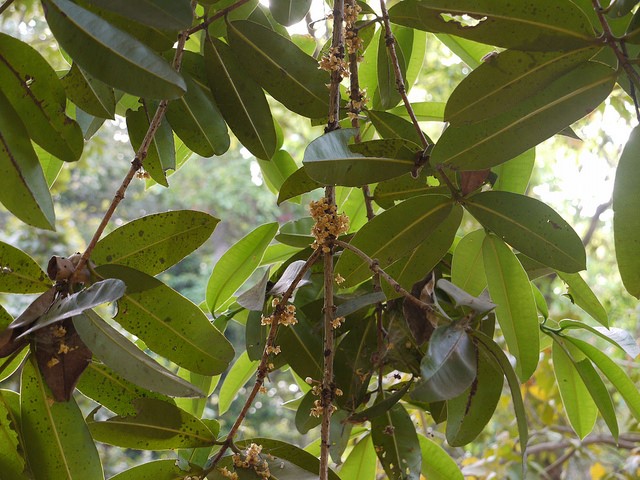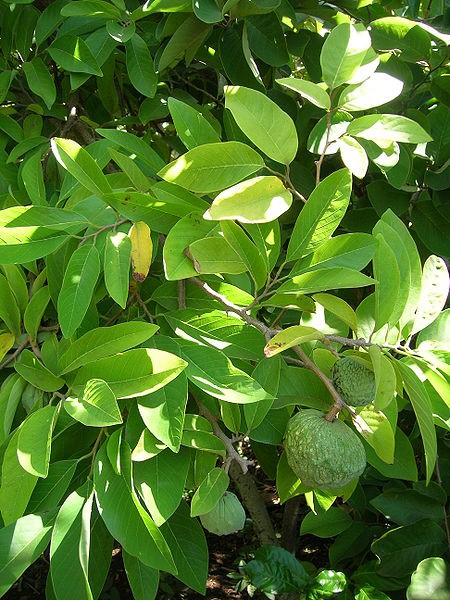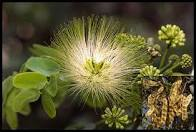Tulasi – Ocimum Sanctum
Literary review
- Charaka quoted this drug under Svasahara gana.
- Sushruta quoted this drug under Surasadi gana.
- Vagbhata quoted this drug under Surasadi gana.
- Bhava prakasha quoted under Pushpa varga and he mentioned two varieties of Tulasi i,e Sukla and Krsna.
- This is quite interesting that Brhat rayi not used the term ‘Tulasi’ too indicate it. It’s synonym “surasa” is mainly used by them in their work while charaka mentioned Apetarakshasi as a synonym.
- Sushruta described two kinds in the context of surasadi gana i,e surasa dve. Reference S.S.Su 38/8. Tulasi is used in visa chikitsa also.
- In Atharva parisista and sankara dharmasutra we come across the mentioning about “tulasi [A.P 35/2/9-11] [S.D.Su 129]. How ever surasa is delineated as a forebidden leafy vegetable in visnu dharma sutra.[V.D.S 79/17]
- Dhanvantari mentioned Tulasi under Karaveerdi varga.
Synonyms
- Tulasi-The leaves are regarded as sacred a good medicine.
- Surasa-The rasa is good and useful.
- Gramya-Common plant grown in village.
- Sulabha-the plant s available easily.
- Bahumanjari- having numerous spike inflorescence.
- Apetarakshasi- It repels the evil spirit.
- Gowri-It protects like goddess gowri.
- Bhoothaghni-drives away evil spirit.
- Devadundubhi- The plant is liked by devas or the flowers are like trumpet.
- Kaayastha- Tulasi maintains body in good condition.
- Svadugandhichada-The leaves have sweet aroma.
- Surabhi-entire plant is aromatics.
- Shoolaghni- It relieves pain.
- Chakraparni- it should be considered as cakra pushpin because the flowers are set densely in a circle.
Vernacular names
| Language | Names |
| Hindi | Tulasi |
| English | Holy basil or sacred basil |
| Kannada | Tulasi |
| Malayalam | Tulasi |
| Telugu | Tulasi |
| Tamil | Tulasi |
| Bengali | Tulasi |
| Marathi | Tulasi |
Varieties
- According to Bhava prakasha:
Two varieties they are according to the colour of the stem and leaves they are
- Shukla Tulasi or shweta Tulasi
- Krushna Tulasi
- According to botony :Ocimum gratissimum Linn is known as Rama Tulasi .
- According to Sushruta : 2 varieties
- Surasa.
- Sveta surasa.
- Some species of ocimum genus are referred in context of Tulasi. They are
- Ocimum canum sims(white flowered, sveta surasa)
- Ocimum gratissimum Linn(phanjjaka, Rama Tulasi)
- Ocimum americanum Linn(a variety of sveta Tulasi)
- Ocimum kilimandascharicum Guerke (Kapuri Tulasi-Karpura Tulasi)
- Ocimum basilicum Linn/ Ocimum minimum Linn.
- Ocimum sanctum.
- According to Kaiyadeva nighantu : 3 varieties
- Tulasi.
- Sveta Tulasi.
- Karpura Tulasi.
- Ref Ni.Oshadi varga 1151.
Useful part
- Panchanga
- Patra
- Pushpa
- Moola
- Seed
- Moola twak.
Dosage
- Swarasa/fresh juice : 10-20 ml
- Patra choorna : 2-3 gm
- Beeja choorna : 1-2 gm
- Panchanga swarasa : 1-3 ml
- Root decoction : 50-100 ml
Chemical composition
Bornyl acetate, cadinene, camphene, camphor, carvacrol, beta-caryophellene, eugenl, eugenol methyl ether, humelene, methyl chavicol, limonene etc.
The leaves on steam-distillation yield a bright yellow volatile oil possessing a pleasant odour characteristic of the plant with an appreciable note of cloves. The yield of oil varies with type, season and the place of origin.
Data of analysis of various samples [collected from different parts of country] are on record, showing the yield of oil [0.1%-0.23% and 0.2-0.33%] acid val (1.1-1.6), phenols [45-70%] and aldehydes [15-25%] and almost similar varying data.
The seeds of plant give a greenish yellow fixed oil 17.8% with god drying properties and with analytical characteristics, matter containing sitosterol.
The fatty acid composition of the oil is as follows:
- Palmitic-6.9%
- Stearic -2.1%
- Oleic -9.0%
- Linoleic -66.1%
- Linolenic -15.7%
Properties
- Rasa – Katu, Tikta
- Guna -Laghu, Ruksha
- Veerya -Usna
- Vipaka -Katu
Doshghnata – Kapha –Vatashamaka.
- Tulasi katu tiktoshna surabhi shleshmavatajith !
Jantu bhoothakrimihara rucikrdvata shantikrth !!
– Raja nighantu. Karaveeradi varga. 150
Karma
- Kaphavatahara
- Deepana
- Krimighna
- Putigandhahara
- Kasahara-Svasahara-ksayahara
- Kanthya
- Hikkanigrahana
- Chardinigrahana
- Krimighna- pachana
- Anulomana
- Janthughna-durgandhanasana
- Sothhara
- Mutrala
- Hrdya-Balya
- Raktashodhana
- Sukrala
- Tvagdoshahara-Kandughna
- Kushtaghna-Svedojanana-Tvachya
- Jwaraghna-Sitaprasamana
- Vishama jwaraghna- Jwarapratisedhaka
- Vishaghna
- Visankramaka
Prayoga
- Vatashleshmika jwara- pratisyaya
- Kasa-Svasa-Parsvasula-Yakshma
- Agnimandhya-Ajirna chardi
- Udarashoola-Pravahika
- Krimiroga
- Jantu,Kitance sankramana
- Bahyakrimi
- Vedana-aksepa-sotha
- Tvagroga-kacchu-pama- kandu
- Jirnavrana-sotha-vrana
- Daghdavrana
- Siroroga
- Karnashoola
- Hrddourbalya- raktavikara
- Sukrameha
- Mutrakracchra- Mutradaha
- Bastisotha- asmari
- Makkalasula
- Visa- vrishchikadamsha
- Jwara- Jirna jwara
- Dourbalya
- Netraroga
- Balaroga
- Parsvasula- visama jwara
Formulation
- Surasadighnakashaya
- Surasadi taila
- Tumburvadi yoga
- Nimbadi lepa
- Sahacharadi taila
- Manasamitravataka
- Tribhuvanakeerti rasa
- Mukta panchamruta rasa
- Mahajvarankusa rasa
- Muktadimahanjana
Substitutes and adulterant
The plant is very commonly grown in houses as it is held sacred in Hindu homes. There is as such no problem of adulteration.
Ocimum sanctum variety, nigram growing commonly in south India is considered more effective. Leaves of this plant is purple or greenish purple in colour.
Therapeutic uses
- Kaphaja kasa
- Kasanardasvasa vitbhrnga raja vartakajo rasa!
Sakshaudra kaphakasaghna surasasya sitasya cha !!
[Cha. Sa. Chi.18/117]
-Fresh juice of krsna tulasi is given with honey.
- Makkalasula
- Surasadalanishyanda puranagudayamandalasamishra!
Peeta prasutisamayadananthara shoolamapaharatya!!
[gadanigraha 6/7-8]
-Juice of tulasi leaves is taken with old jiggery and manda.
- Paksmasata
- Sanchoornya pushpakaseesam bhavyeth surasarasai!
Pamra idashaham param paksmashate tadanjanam!!
[Ah.Hr.Utt.9/20]
-A copper vessel is impregnated with paste of pushpa kasisa mixed with tulasi juice and left for 10 days. Afterwards that paste is collected and used as anjana.
- Visamajwara
- Peeta mareecha choornea Tulasi patrajo rasa!
[sharangadhara samhita]
[B.P jwaradhikara 1/754]
- Palitya
- Sahacharadi taila!
[Ah.Hr.Utt.24/37-38]
Research
- Leaves shown abortificient and anti-fertility activity. The aqueous extract (100 mg/kg) showed anti-implantation and abortificient action (vohara et al,1969)
- Benzene and PE extracts of leaves (100 mg/kg) showed 80% and 60% anti- fertility effect in rats (Batta and Santhakumari 1971)
- Hitological and biochemical studies on mice fed with leaves showed evidence of mild impairment of spermatogenesis with significant reduction of seminal PH (Kasinathan etc al 1972)
- 50% ethonic extract of leaves showed hypoglycaemic effect in rats and antispasmodic activity against spasmogen induced spasms in isolated guines pig ileum (Dhar etal.1968)
- Crude watery extract of leaves showed transient hypotensive effect in anaesthetized dogs and cats and a negative inotropic and chronotropic effect on rabbit heart (singh et al 1970)
- The volatile oil is reported to be mosquito larvicidal as well as mosquito- repellent (Sharma and wattal 1979)
- The ether extract of leaves showed anti bactorial activity (Joshi and Magar 1952, Gupta and viswanatham 1955) the essential oil also exhibited anti- bactorial activity (Grover and Rao 1977)
- Anti-viral activity of leaf extract is reported (Roy et al 1979, Tripathi and Tripathi 1982)






